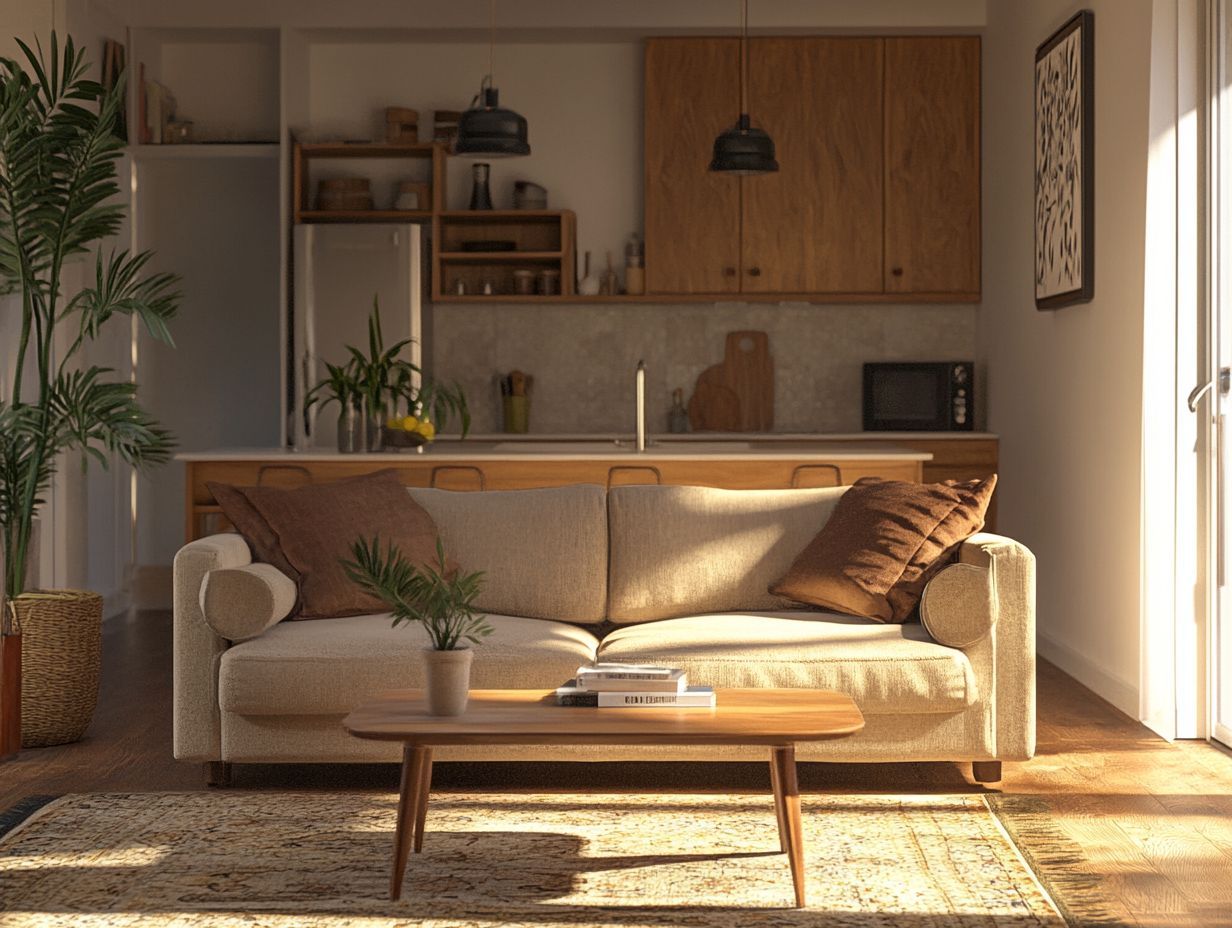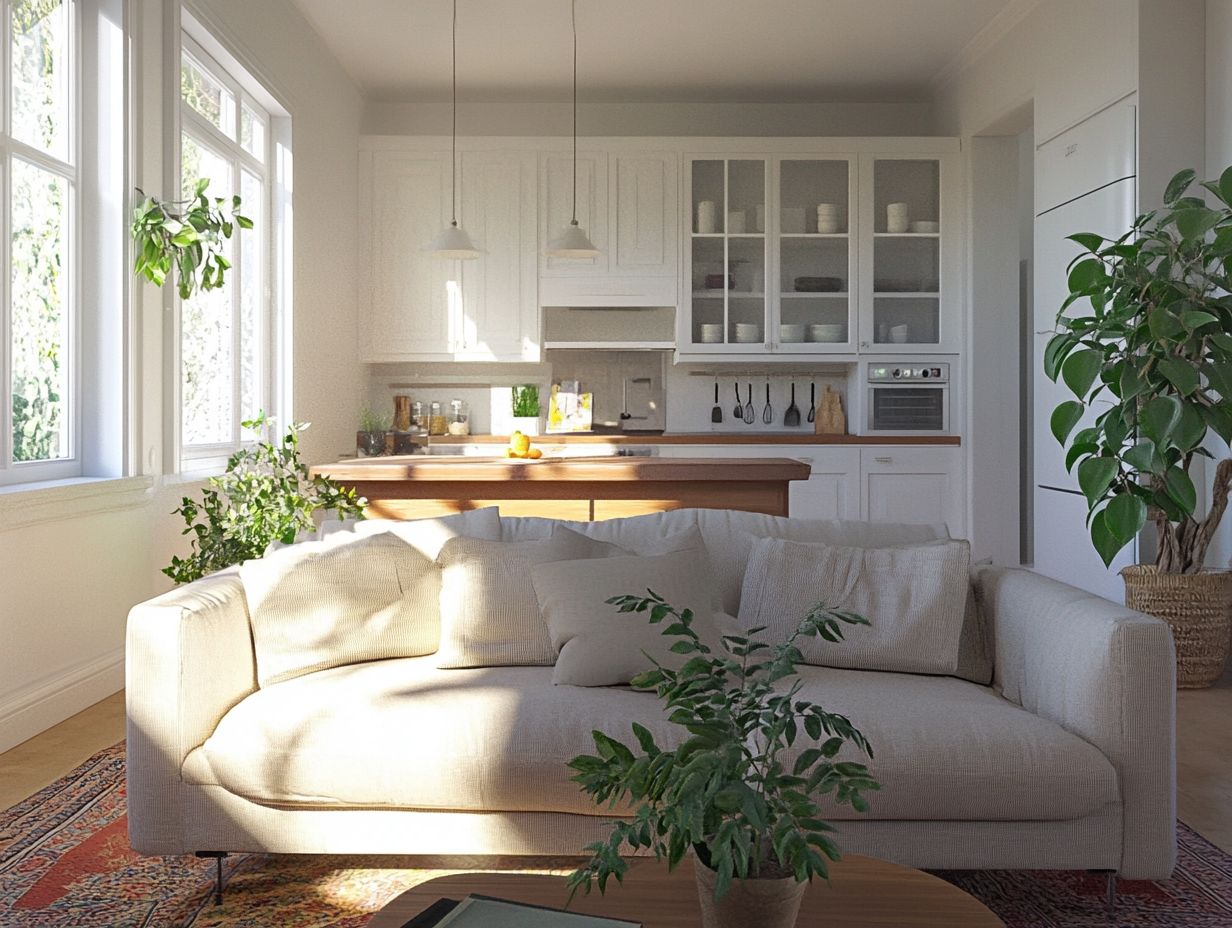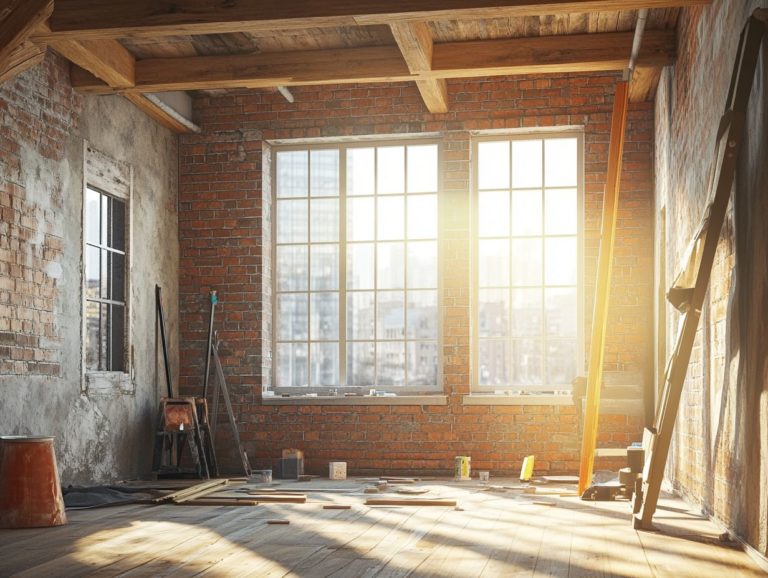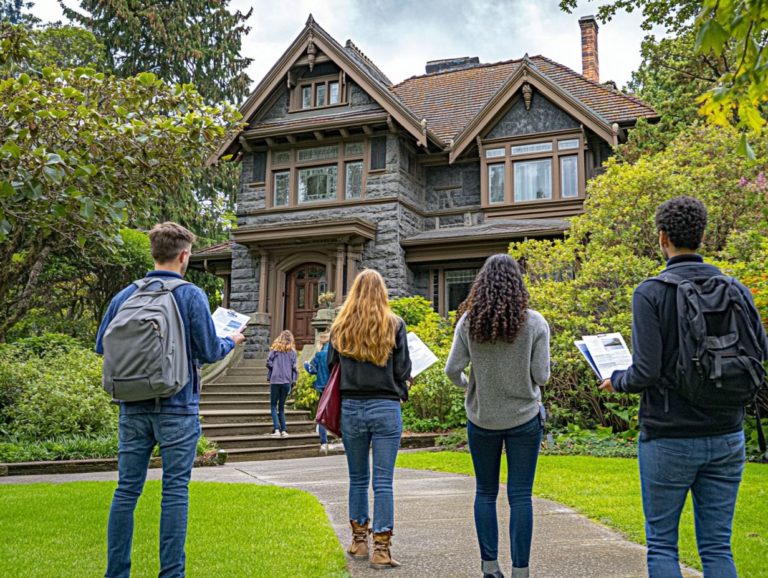5 Key Features of a First Home
Buying your first home is not just an exciting milestone; it s a journey that can feel quite overwhelming. With numerous factors vying for your attention, it s vital to navigate this process with careful consideration.
In this guide, you ll discover five essential features to prioritize:
- Location
- Affordability
- Size and layout
- Necessary amenities
- The potential for growth and resale value
Whether you re stepping into the world of homeownership for the first time or seeking to refresh your knowledge, this information will empower you to make informed decisions and ultimately help you find that perfect place to call home. Get ready to find your perfect home!
Contents
- Key Takeaways:
- 1. Location, Location, Location
- 2. Affordability
- 3. Size and Layout
- 4. Amenities and Upgrades
- 5. Potential for Growth and Resale Value
- What Are the Most Important Factors to Consider When Buying a First Home?
- How Can One Determine the Best Location for Their First Home?
- What Are Some Ways to Make a First Home More Affordable?
- How Can One Determine the Ideal Size and Layout for Their First Home?
- What Are Some Essential Amenities and Upgrades to Look for in a First Home?
- How Can One Ensure Their First Home Has Potential for Growth and Resale Value?
Key Takeaways:

The location of a first home is crucial for both convenience and potential growth in resale value. Affordability is a key factor in buying a first home, and there are ways to make it more manageable, such as considering a fixer-upper or government programs. Additionally, knowing what to look for in your first home is essential, as size and layout should fit the buyer’s current needs and potential future ones.
1. Location, Location, Location
Location is everything! It affects your home’s value and your lifestyle.
It profoundly impacts property value, access to amenities, and the overall quality of life for you and your family.
Consider elements like proximity to schools, shopping areas, and transportation options. These factors can significantly sway your home purchase decision.
In cities like Seattle, where the housing market can fluctuate dramatically from one neighborhood to another, conducting thorough neighborhood research becomes crucial in pinpointing the ideal spot for your new home.
Understanding local neighborhoods extends beyond merely finding a house; it’s about immersing yourself in the community. Pay attention to neighborhood amenities such as parks, community centers, and recreational areas. These can enhance your daily living experience.
Evaluating property value trends over time offers valuable insights into potential future investments, enabling you to make informed decisions.
While this process can feel overwhelming, enlisting the help of a knowledgeable real estate agent can be invaluable in navigating the intricacies of neighborhoods and market dynamics. Using tools like Trulia can provide important neighborhood insights, transforming the home-buying experience into something both efficient and enjoyable.
2. Affordability
Affordability is a pivotal consideration when purchasing your first home. It includes not just the home’s price tag but also a range of associated costs, such as the down payment, closing costs, and ongoing expenses like mortgage payments and home insurance.
This makes financial planning an essential part of the process. To establish a realistic budget, assess your monthly income and current debts to ensure you won t stretch your finances too thin.
Securing a preapproval letter from a mortgage lender a document that shows how much they will lend you is essential. It clarifies how much you can borrow and signals your seriousness to sellers.
When calculating closing costs the extra fees you pay on top of the home’s price it s prudent to factor in additional expenses such as home inspections and appraisal fees.
Understanding the specifics of loan terms, such as interest rates, is crucial. Fixed means your rate stays the same, while variable can change over time. This significantly influences your long-term financial stability.
Lastly, preparing accurate financial documents like tax returns and bank statements will pave the way for a smoother transaction, facilitating your journey to homeownership without unnecessary delays.
3. Size and Layout

Choosing the right size and layout for your first home is vital. It impacts your lifestyle and family dynamics, and you can also explore 5 tips for first-time home buyer grants to make the process smoother.
Carefully analyze your preferences and practical needs. As you explore different layouts, consider the differences between open floor plans and traditional designs. This choice significantly affects how well your space accommodates various home features.
Open plans often exude a sense of expansiveness, encouraging fluid interactions. Traditional designs provide distinct areas tailored for specific functions. Thinking ahead is crucial; envisioning future needs and potential renovations enhances your long-term satisfaction.
While searching for your ideal home, assess the local area’s growth potential and understand the local rules about property use. Imagine how your space might evolve to suit your lifestyle.
4. Amenities and Upgrades
When you’re in the market for your first home, pinpoint essential amenities and consider potential upgrades. Additionally, be aware of 5 red flags when buying your first home. This strategy boosts comfort and convenience while enhancing your property’s value over time.
Choose a property with community amenities like parks, pools, or clubhouses to foster a sense of belonging. Safety supplies, such as smoke detectors and security systems, protect your home and provide peace of mind.
Upgrading to energy-efficient appliances can lead to lower utility bills and a reduced carbon footprint, aligning with your eco-conscious values. Incorporate smart home technology, from video doorbells to programmable thermostats, to simplify daily routines.
These enhancements make life more enjoyable and future-ready, positioning your home as an attractive investment for future buyers.
5. Potential for Growth and Resale Value
Understanding growth potential and resale value is crucial for first-time homebuyers. Choosing a property in a vibrant neighborhood can lead to impressive returns on your investment.
Assess the local housing market and conduct thorough neighborhood research to uncover vital insights into the area’s appeal.
Consider factors like proximity to community amenities schools, parks, and shopping centers as these influence a location’s desirability. Examine the condition of nearby properties and stay attuned to market trends to determine if a neighborhood is rising or plateauing.
These elements contribute to your growth potential and help maintain a strong resale value, aligning with your long-term financial goals.
What Are the Most Important Factors to Consider When Buying a First Home?

When you embark on purchasing your first home, consider several key factors, including the 5 must-have features for your first home, to secure your dream home. These elements significantly influence your satisfaction and financial stability.
Understand the buying process and gather the necessary financial documents and mortgage information. Location is a key aspect; it greatly impacts your lifestyle and the future resale value of your investment.
Affordability is critical; striking a balance between your dream home and budget is paramount. Assess the size of the property to ensure it meets your current needs while accommodating future growth.
Organized financial documents can simplify the mortgage process, reducing stress and helping you understand your obligations. Familiarizing yourself with these aspects will empower you to navigate the home-buying landscape with increased confidence.
How Can One Determine the Best Location for Their First Home?
Determining the best location for your first home is crucial. It requires thorough neighborhood research and consideration of community amenities, which will significantly shape your living experience and long-term satisfaction with your property.
Understanding the intricacies of school districts, transportation access, and local amenities is essential. Making a smart choice now will pay off later! For example, top-rated schools not only enhance property values but attract families, while easy access to public transit can streamline commutes and enrich your daily life.
Get help from a real estate agent. They can provide invaluable insights into neighborhoods by presenting data on school rankings, nearby parks, and shopping centers. Their expertise can help you navigate potential pitfalls and ensure your investment is wise.
What Are Some Ways to Make a First Home More Affordable?
Making your first home more affordable requires strategic financial planning and a keen eye for opportunity. Consider exploring lower down payment programs, tapping into government assistance, and comparing offers from multiple mortgage lenders to secure the best possible terms.
Budgeting for closing costs is essential. It helps you understand the total expenses you ll face, including inspection fees, title insurance, and attorney costs, which can quickly add up.
Obtaining a solid mortgage preapproval means getting a commitment from a lender on how much money you can borrow. This not only streamlines your home-buying process but also enhances your buying power, enabling you to negotiate more favorable terms.
Seize cost-saving opportunities your wallet will thank you! Searching for properties that may need minor repairs or opting for less competitive neighborhoods can lead to substantial financial savings both now and in the future.
How Can One Determine the Ideal Size and Layout for Their First Home?

Determining the ideal size and layout for your first home requires a thoughtful assessment of your current and future needs. You’ll want to consider lifestyle preferences, family recommendations, and 5 steps to a successful home purchase that will best align with your aspirations.
Know your family’s needs. A growing family may require more bedrooms or a larger gathering area. Your lifestyle habits also matter if you enjoy entertaining, open-plan designs could be ideal, while those who cherish quiet solitude might prioritize cozy nooks for relaxation.
In today s homes, effective storage solutions are increasingly vital. Evaluating how to incorporate smart shelving, cabinets, and multifunctional furniture can significantly enhance usability and organization.
A well-planned layout not only maximizes your space but also creates a more enjoyable living experience, allowing each family member to thrive in their designated areas.
What Are Some Essential Amenities and Upgrades to Look for in a First Home?
Identifying essential amenities and potential upgrades is pivotal in your home search. These elements enhance your comfort and can increase the overall value of your first home over time, especially when you consider local real estate trends for first-time buyers.
Consider features like outdoor spaces they offer a refreshing retreat for relaxation and entertaining guests. Meanwhile, energy-efficient appliances trim your utility bills and lessen your ecological footprint.
Integrating modern home security systems is another vital consideration. They provide peace of mind and ensure you feel safe and secure in your abode. By prioritizing these upgrades, you can significantly elevate your living experience while minimizing maintenance hassles.
Such thoughtful investments create an environment where comfort and functionality harmonize. This enriches your daily routines and transforms life at home into something truly special.
Take your time, do your research, and make a choice that feels right for you and your future. Your dream home awaits!
How Can One Ensure Their First Home Has Potential for Growth and Resale Value?
Ensuring your first home has growth potential and resale value requires careful evaluation of trends. Neighborhood dynamics and community development significantly influence your investment’s future profitability.
Study planned developments that could enhance local infrastructure or amenities think parks, schools, or shopping centers. By looking at these factors, you can anticipate how they may impact property demand and values over time.
Understanding current market conditions, including supply and demand dynamics, is crucial when selecting properties. Prioritize locations that show signs of desirability. These areas are more likely to appreciate over time, providing a solid foundation for both personal enjoyment and future financial gains.
Watch this video for valuable insights on choosing your first home!
Frequently Asked Questions
What are the 5 key features of a first home?
The 5 key features of a first home are location, affordability, size, resale potential, and safety.
Why is location an important feature for a first home?
Location is important because it determines the neighborhood, school district, and proximity to amenities and transportation. These factors can impact daily life and future resale value.
How does affordability factor into choosing a first home?
Affordability is crucial for first-time homebuyers as it sets the budget and potential mortgage payments. Find the sweet spot between a great location and a comfortable price!
What should be considered when it comes to the size of a first home?
The size of a first home should be based on your current needs and future plans. Consider factors like the number of bedrooms and bathrooms, as well as the 5 tips for successful house hunting, including potential for expansion or downsizing in the future.
Why is resale potential a key feature of a first home?
Resale potential is important because it ensures that your investment in a first home will retain its value over time. Factors like location, size, and neighborhood can impact the resale value of a home.
How can safety be ensured when choosing a first home?
Safety should be your top priority make sure you choose a home in a community where you can feel secure! Consider factors like crime rates, proximity to emergency services, and the overall safety of the neighborhood when making a decision.






